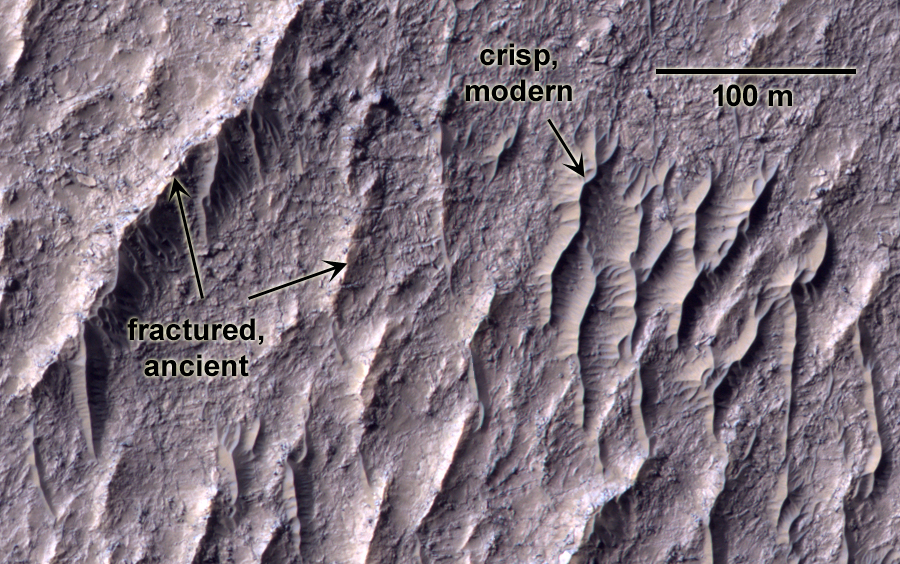Hills with tails

Defrosting dunes in Jeans crater
May 26, 2020
The new crater
June 15, 2020June 8, 2020
No long descriptions or explanations today, just a pretty picture of a lee dune (the dark rippled finger extending down the left side of this image):

A lone drift of sand on the lee side of a hill in the southern highlands of Mars. HiRISE Image ESP_064481_1695. View is 1.21×1.18 km (0.75×0.73 mi). Image Credit: NASA/JPL/Univ. of Arizona
The rounded gray hills at the top are part of the little central peak of a~25 km diameter crater. Why is the dune there? Well first let’s see where it is to begin with. Here’s some context:

Our lee dune is the tiny dark smudge in the center of the crater. Image made in JMARS from the CTX global mosaic. Image Credit: NASA/JPL/MSSS
Dark sand is being blown through this area. Some has gotten caught inside this crater, the way crumbs get stuck in between floor tiles when you sweep (which is super annoying when you clean the floor, but here it’s telling us a lot about wind and sediment on Mars). A little bit has gotten caught behind the crater’s central peak, and is trying to make its way downwind – that’s our lee dune.
The dark spots at the southern part of the crater are more dunes that have piled up as the sand blows southward. The sand wants to keep going out of the crater but it gets pushed up against the southern rim of the crater. I’d bet that these dunes are actively migrating today. If we ever get more images of this lee dune, we’d probably see that the ripple pattern has changed as the wind contiues to blow sand.



